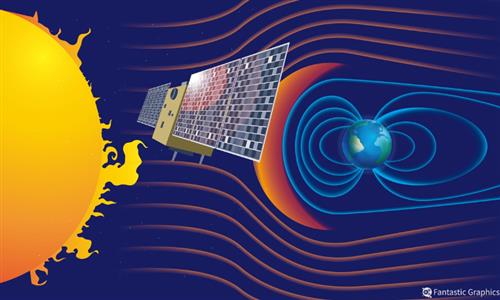IN-DEPTH / IN-DEPTH
Chinese scientists strive to be the first to observe the sun’s north, south poles: academician

Wang Jingxiu, academician at the Chinese Academy of Sciences and researcher at the National Astronomical Observatories Photo: Courtesy of the Beijing Association for Science and Technology
"The sun is an eternal challenge in the journey of human exploration," Wang Jingxiu, academician at the Chinese Academy of Sciences (CAS) and researcher at the National Astronomical Observatories of the CAS (NAOC), told the audience at a New Year's Eve event hosted by the Beijing Association for Science and Technology.
Having devoted 45 years to sun-related research, Wang has a deep understanding of the vital importance of the sun.
"The sun is the governor of the entire solar system. It created the Earth, which is the cradle of humanity. It also created the solar system, which is the habitat for humans. Studying the sun is studying the home of humanity," Wang told the Global Times.
In terms of scientific study, the sun, the closest star to Earth, is the only celestial body that allows for high temporal resolution, high spatial resolution, high spectral resolution, and high polarization measurement accuracy. Therefore, the knowledge accumulated from studying the sun has guided the entire human exploration of the universe.
After decades of development, solar physics research in China is at a leading juncture internationally. China's advantage lies in the study of solar activity and solar magnetic fields, but there is still a certain gap in solar internal structure research.
In fact, China's solar research has developed rapidly. In the 1960s, China created the world's best solar magnetograph, the Huairou Solar Magnetic Field Telescope, which marked a new beginning for solar research in China. In the field of ground-based solar magnetic field and velocity field imaging observations, especially in the research of vector magnetic field observations, China is a world leader.
Wang recalled that in 1999, using this telescope, Deng Yuanyong, currently director of the NAOC Huairou Solar Observing Station, Chinese academician Ai Guoxiang, and himself became the first in the world to measure the vector magnetic field in the solar polar region.
China ushered in a new era of solar exploration in 2021 with the successful launch of China's first solar exploration scientific experimental satellite, the Xihe. The satellite allows Chinese people to conduct detailed research on the rotation of the sun and the dynamics of solar eruption source regions. About a year later, China launched its first comprehensive solar exploration satellite, Kuafu, furthering the country's scientific endeavor to unravel the secrets of the sun.
Xihe is the name of the sun goddess in ancient Chinese mythology and Kuafu is a giant in Chinese mythology, who indefatigably chased the sun. With Xihe and Kuafu joining forces, "China has spread the romance of Chinese astronomy to space in its own way," Wang said.
Looking forward to the long-term study of the sun, Wang hopes that Chinese scientists will become the first to observe the north and south poles of the sun to measure the magnetic field and activities there.
"In solar observations, what has not been directly observed so far are the north and south poles of the sun. The importance of these poles goes beyond our imagination. Therefore, Chinese scholars want to do something that other countries have not done yet and assume a leading role in the study of the sun in the world," he said.
He also stressed the necessity of developing the scientific payload of China's probes to obtain more accurate data, which is crucial for solar exploration.

